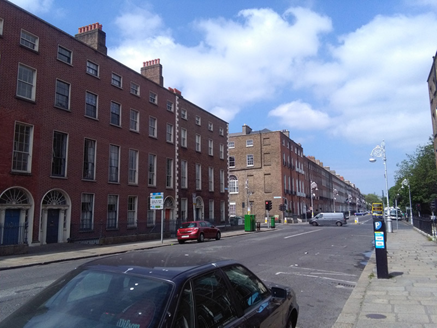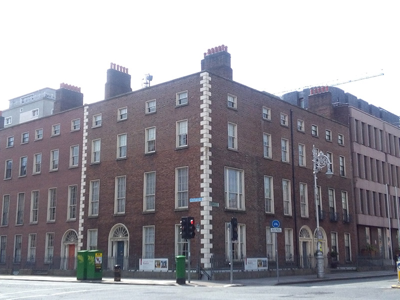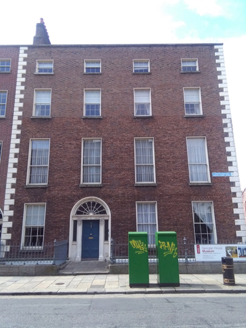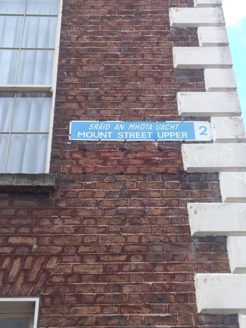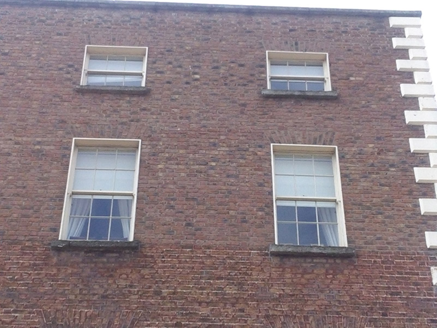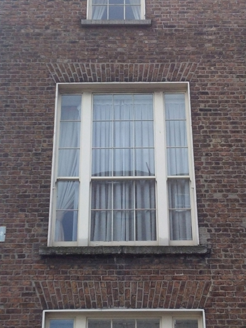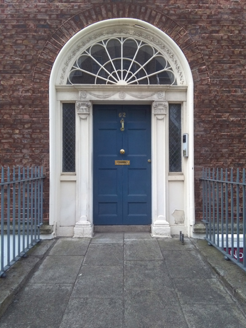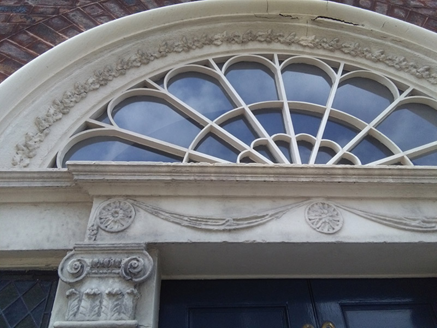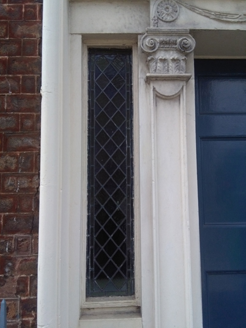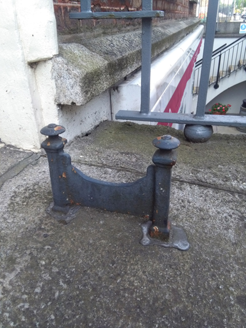Survey Data
Reg No
50100597
Rating
Regional
Categories of Special Interest
Architectural, Artistic
Original Use
House
In Use As
Office
Date
1790 - 1830
Coordinates
316778, 233381
Date Recorded
05/06/2016
Date Updated
--/--/--
Description
Corner-sited four-bay four-storey former house over basement, built c. 1810 as end-of-terrace of five, having single-bay elevation to west (Fitzwilliam Street) and full-height glazed extension of c. 1980 to rear. Pitched slate roof to front span, hipped to west end, behind brick parapet wall with granite coping, shouldered brick chimneystacks with terracotta pots, and concealed rainwater goods. Flemish bond red brick walling with wigged pointing and rusticated painted masonry quoins on masonry plinth course over painted smooth rendered basement walls. Square-headed window openings, diminishing in height to upper floors, with patent reveals and granite sills (some replacement concrete). Largely replacement timber sliding sash windows with simple horns, six-over six pane to ground and second floors, nine-over-six pane to first floor and three over-three pane to top floor. Wrought-iron grilles to basement. Wyatt-style windows to ground and first floors of west elevation. Round-headed doorway with stucco surround, doorcase comprising engaged panelled pilasters with Adamesque Ionic capitals, stepped entablature with swags and rosettes to frieze, diamond-motif leaded sidelights, replacement petal fanlight, foliate archivolt and eight-panel replacement timber door with beaded muntin and brass furniture. Granite entrance platform with cast-iron boot-scrape and two steps to street level. Basement area enclosed by wrought-iron railings with decorative cast-iron posts and lamp standards, over moulded granite plinth. Rear enclosed by late twentieth-century buildings.
Appraisal
Located on a prominent corner site, this early nineteenth-century house terminates the west end the terrace. Laid out in the 1780s and principally developed by a Mr Osburne and David Courtney, Mount Street Upper linked the newly constructed Grand Canal to the upper class residential developments that radiated from Leinster House. Built in pairs and rows over a period of thirty years, the fifty-four houses on the street were completed by 1834. The terrace is characterized by well-balanced proportions typical of the period, but Nos. 58-62 boast more elaborate doorcases, while an additional bay, corner quoins and Wyatt-style windows further distinguish No. 62. Such variations within the terrace are indicative of the piecemeal development of the street. Although much of the original detailing of the house was replaced during renovation works in the 1990s, the overall character has been retained and it represents an important feature of the streetscape. Mount Street Upper is terminated by St. Stephen's Church at its east end, providing an impressive landmark focus and is one of the key vistas of Georgian Dublin.
